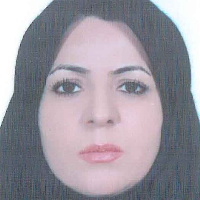Estimation of above-ground biomass of winter wheat (Triticum aestivum L.) using multiple linear regression, artificial neural network models remote sensing data
Above-ground biomass (AGB) provides a vital link between solar energy consumption and crop yield, so accurate estimation of biomass is very important for accurate monitoring of crop growth and yield prediction and helps agricultural managers to improve crop management. In recent decades, remote sensing has been widely used as a tool to estimate crop biophysical parameters. The potentials of remote sensing techniques promise fast, periodical, and non-destructive estimation of above-ground biomass. For this purpose, this study was conducted with the aim of applying remote sensing technology and comparing two statistical models of multiple linear regression and artificial neural network to estimate winter wheat biomass in Shahrekord County, Chaharmahal and Bakhtiari province in 2017.
In this study, in order to estimate the wheat biomass by Landsat 8 satellite images, eight fields under winter wheat cultivation with an area between 10 to 60 hectares throughout Shahrekord County were considered. Then the location of 120 sampling units was randomly determined by GPS. Samples units were taken as 30 × 30 m squares according to Landsat pixels. Each of these units includes 5 plots of 0.25 m2 in four corners and the center of the square. During the growing season, on 20th April, 22nd May, 23rd June, and 25th July 2017, at the same time the satellite passes, sampling was carried out on farms. Field data collection included above-ground biomass and counting the number of plants per plot. Then the samples were transferred to the laboratory and dried and weighed. At the same time, data from Landsat 8 satellite remote sensing were obtained at these dates, and vegetation indices were calculated using satellite bands. In this study, wheat biomass was estimated using 25 vegetation indices and multivariate linear regression (MLR) and artificial neural network methods (ANN). Multilayer perceptron artificial neural network model (feed-forward) was designed and its performance was compared with multivariate linear regression model. To construct and validate the model and compare the results of these two models, statistics such as coefficient of determination (R2), root mean square error index (RMSE) and mean error (ME) were used.
The results showed that the ANN model with R2=0.83 and RMSE=53.91 g/m2 for training data and R2=0.85 and RMSE=46.74 g/m2 for test data and multivariate linear regression model with R2=0.78 and RMSE=65.68 g/m2 estimated biomass. In multivariate linear regression, EVI, CIgreen, PSRI, CRI, VARI, and GNDVI indices are the most effective indices for estimating crop biomass, respectively. GI, SAVI, ARVI, CRI, EVI, NDWI, MSR, and NDVI indices were the most sensitive to wheat biomass in ANN model, respectively.
The findings of the present study showed that the use of satellite images and developing parametric and non-parametric statistical models helps to estimate winter wheat biomass in the study area. Also, the artificial neural network method has better predictive accuracy than the multiple linear regression method. Therefore, the use of this method as a suitable approach in estimating winter wheat biomass is suggested.
- حق عضویت دریافتی صرف حمایت از نشریات عضو و نگهداری، تکمیل و توسعه مگیران میشود.
- پرداخت حق اشتراک و دانلود مقالات اجازه بازنشر آن در سایر رسانههای چاپی و دیجیتال را به کاربر نمیدهد.


